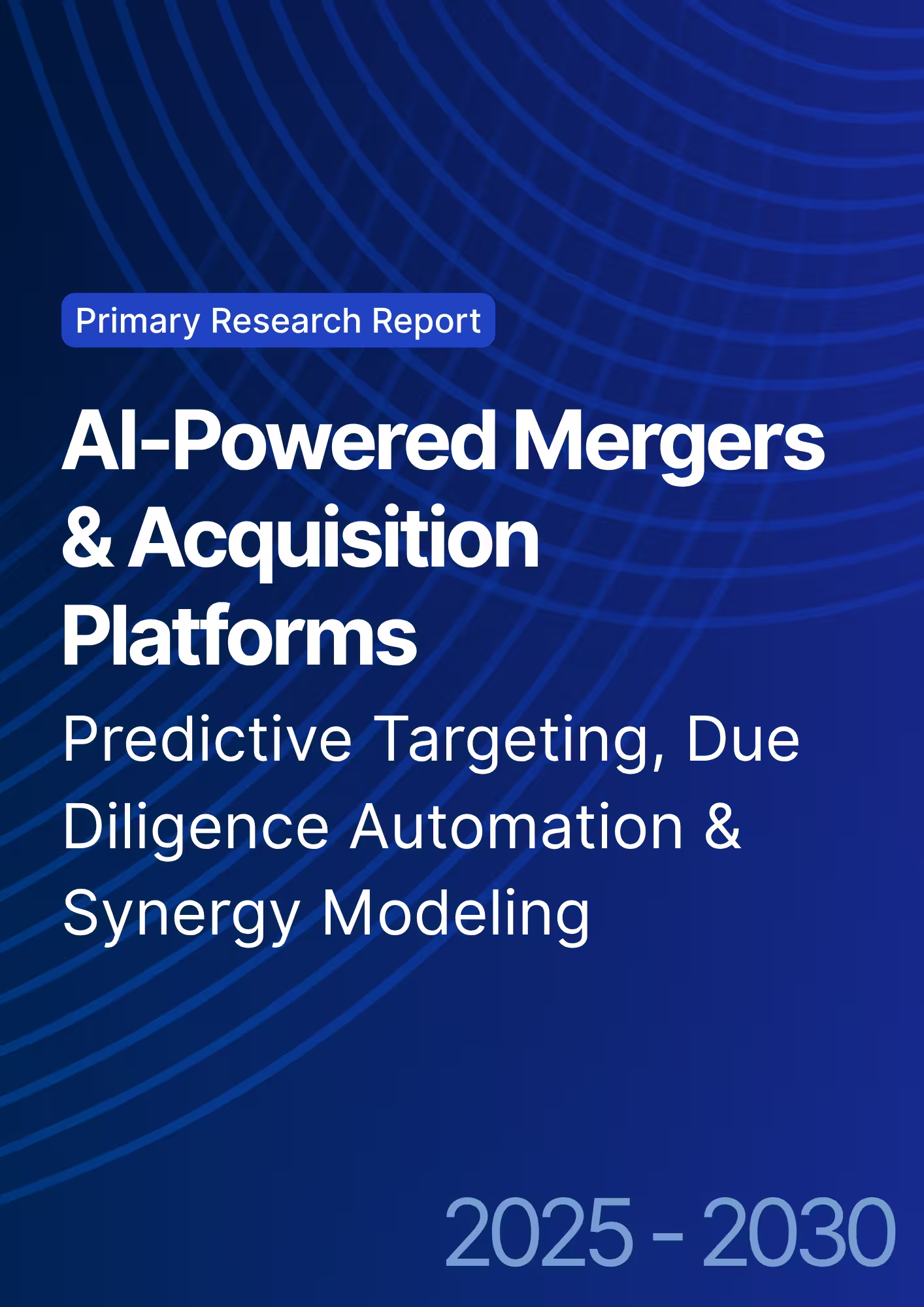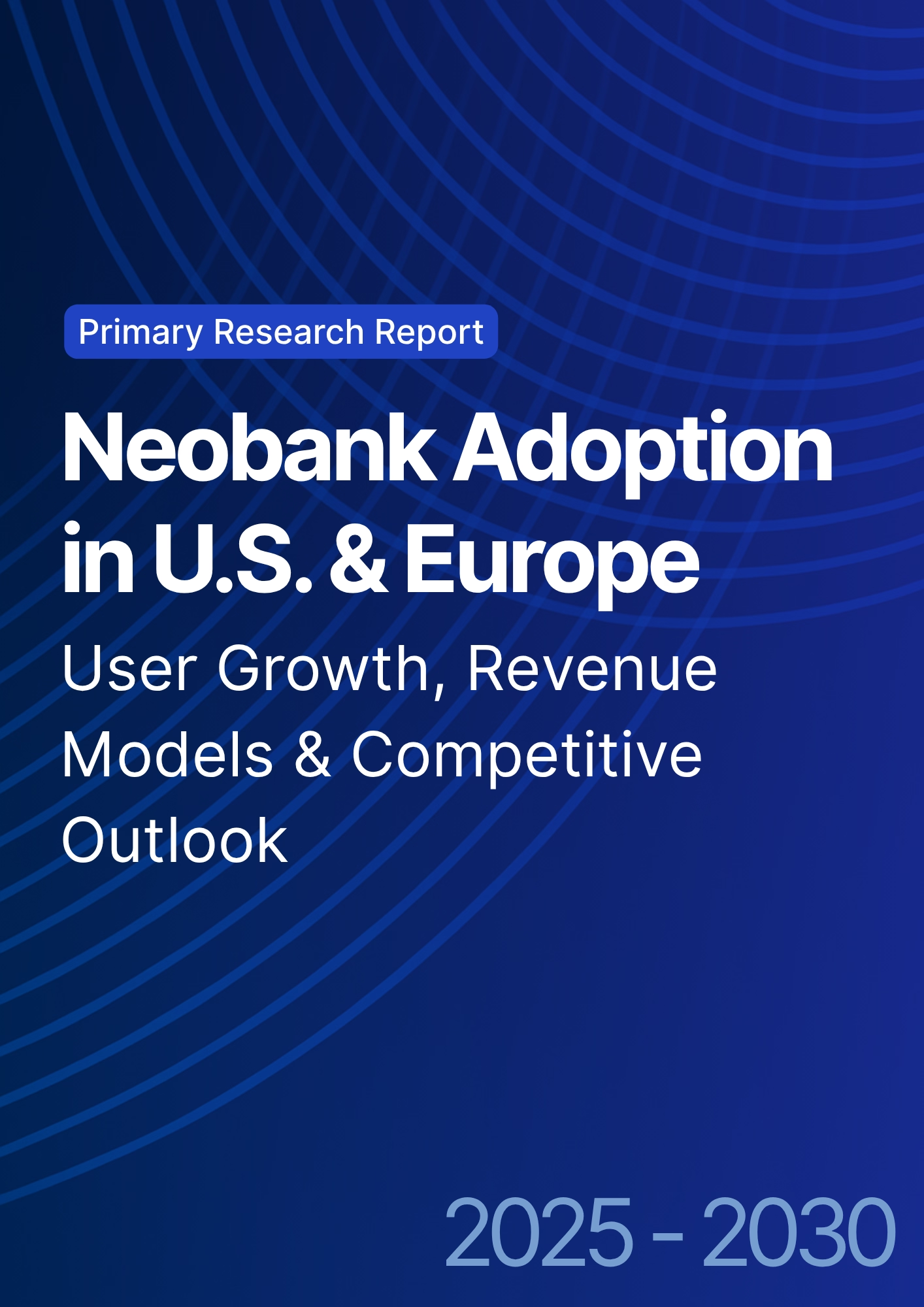

68 Circular Road, #02-01 049422, Singapore
Revenue Tower, Scbd, Jakarta 12190, Indonesia
4th Floor, Pinnacle Business Park, Andheri East, Mumbai, 400093
Cinnabar Hills, Embassy Golf Links Business Park, Bengaluru, Karnataka 560071
Connect With Us
Metaverse Banking Experiences: Virtual Branch Design & NFT-Backed Loans - Technological Advancements
This research examines Metaverse banking experiences in North America from 2025 to 2030, focusing on virtual branch design, NFT-backed loans, and technological innovations. The report quantifies adoption trends, transaction volumes, investment in immersive banking platforms, and regulatory coverage. AI-powered avatars, interoperable metaverse platforms, and blockchain-backed loans are analyzed for financial impact. By combining quantitative metrics with technology-driven insights, the study provides actionable intelligence for banks, fintech innovators, and investors seeking to optimize engagement, reduce operational costs, and capture growth in the immersive digital banking ecosystem.

What's Covered?
Report Summary
Key Takeaways
- Metaverse banking market projected to grow from $3.5B in 2025 to $12.8B by 2030, CAGR 29%.
- 45% of top-tier banks expected to implement virtual branches by 2030.
- NFT-backed loan portfolios projected at $4B by 2030.
- Annual transaction volumes expected to grow 35%, driven by immersive VR adoption.
- Virtual banking platforms to drive 20% higher customer engagement vs digital-only channels.
- Regulatory frameworks will cover 65% of NFT-backed loans by 2030.
- AI-driven avatars and chatbots projected to handle 70% of customer interactions.
- Interoperable metaverse platforms will account for 50% of virtual banking solutions.
- Early adopters expected ROI of 12–15% from NFT-backed and digital asset initiatives.
- Investment in metaverse infrastructure expected to grow 40% annually through 2030.
Market Size & Share
The metaverse banking market in North America is projected to expand from $3.5B in 2025 to $12.8B by 2030, with a CAGR of 29%. Growth is concentrated in top-tier banks implementing immersive virtual branches, integrated NFT lending, and AI-powered customer services. By 2030, 45% of leading US banks will have fully operational virtual branches, offering 3D banking experiences, VR advisory, and seamless integration with digital wallets. NFT-backed loans are forecast to reach $4B in volume, supported by blockchain-enabled collateralization, which allows secure and verifiable lending. Transaction volumes on virtual platforms are expected to grow 35% annually, reflecting increasing adoption of interoperable metaverse banking solutions. AI-driven avatars and chatbots will manage 70% of customer interactions, reducing operational costs while enhancing engagement and responsiveness. Regulatory frameworks are projected to cover 65% of NFT-backed loan operations by 2030, ensuring compliance, AML monitoring, and consumer protection. Investment in infrastructure, including VR/AR platforms, blockchain networks, and cybersecurity, is expected to grow 40% per year, enabling scalability and innovation. Early adopters are expected ROI of 12–15% from NFT-backed loan portfolios and immersive banking initiatives. Overall, North American banks leveraging metaverse technologies will see enhanced customer engagement, improved operational efficiency, and increased revenue streams from new digital assets.

Market Analysis
The North American metaverse banking market demonstrates rapid expansion due to technology adoption, investor interest, and regulatory adaptation. Market size is projected to increase from $3.5B in 2025 to $12.8B by 2030, driven by virtual branch implementations and NFT-backed lending products. Virtual branches are expected to reach 45% adoption among top-tier banks by 2030, offering immersive 3D environments, AI-powered advisory services, and secure digital asset transactions. NFT-backed loans will reach $4B in portfolio volume, with interest rates slightly higher than conventional loans due to digital asset collateralization and blockchain verification. Transaction volumes are projected to grow 35% annually, supported by interoperable metaverse platforms and integrated payment rails. AI-powered avatars and chatbots will handle 70% of interactions, enabling banks to provide 24/7 advisory services while reducing operational costs. Regulatory coverage for NFT-backed loans is expected to extend to 65% of operations by 2030, addressing emerging compliance, risk, and consumer protection concerns. Investment in metaverse infrastructure is projected to grow 40% annually, encompassing VR/AR platforms, blockchain networks, and cybersecurity solutions. Market analysis indicates that banks adopting immersive technology early will gain a competitive advantage, attract digital-native clients, optimize capital allocation, and generate measurable ROI from virtual banking initiatives.
Trends & Insights
Metaverse banking adoption in North America is driven by technology, customer expectations, and regulatory evolution. Virtual banking platforms are projected to grow from $3.5B in 2025 to $12.8B by 2030, driven by immersive VR branch experiences and integrated NFT-backed lending. NFT-backed loans are forecast to reach $4B, creating new revenue streams for banks and investment opportunities for clients. Transaction volumes on metaverse platforms are expected to increase by 35% annually, supported by interoperable platforms that enable cross-bank and cross-platform asset transfers. AI-powered avatars and chatbots will manage 70% of customer interactions, improving efficiency and enabling personalized advisory services. Customer engagement on virtual platforms is projected to rise 20% relative to traditional digital-only banking. Regulatory frameworks will cover 65% of NFT-backed operations by 2030, addressing AML, KYC, and consumer protection requirements. Early adoption of VR, blockchain, and AI is projected to deliver ROI of 12–15%, incentivizing large-scale investments. Emerging trends include cross-platform banking interoperability, real-time NFT valuation and collateralization, and gamified customer interactions, all of which drive higher retention, increased transaction volumes, and greater adoption. Banks leveraging these trends will achieve strategic differentiation, operational efficiency, and scalable digital engagement in North America’s virtual financial ecosystem.

Segment Analysis
Metaverse banking in North America is segmented by bank type, service type, and customer adoption. Top-tier banks are projected to account for 45% of virtual branch adoption by 2030, while mid-tier and regional banks comprise 35%, and fintech-first platforms contribute the remaining 20%. NFT-backed loans represent $4B in portfolio value, largely issued to HNWIs and tech-savvy retail investors. Customer engagement on virtual platforms is projected to increase 20%, driven by interactive 3D banking experiences and AI-powered advisory. Annual transaction volume growth is forecast at 35%, with the majority of transactions occurring on interoperable metaverse platforms (50%). AI-driven avatars and chatbots will handle 70% of interactions, reducing operational costs while delivering personalized financial services. Regulatory compliance will cover 65% of NFT-backed loan operations, including AML, KYC, and risk management frameworks. ROI for early adopters is projected at 12–15%, incentivizing investments in metaverse infrastructure. Segmentation highlights differences in adoption rates across bank size, customer profile, and digital readiness, showing that top-tier banks and fintech platforms will lead adoption. The segment analysis emphasizes technology deployment, digital asset utilization, and operational efficiency as key drivers of growth in North America’s metaverse banking ecosystem.
Geography Analysis
The North American metaverse banking market is concentrated in the US, representing over 90% of regional adoption due to the presence of major financial hubs in New York, Chicago, and San Francisco. Canada and smaller markets account for the remaining 10%, with slower adoption due to regulatory differences and lower investment in immersive banking. Virtual branch adoption is projected to reach 45% of top US banks by 2030, while NFT-backed loan portfolios will grow to $4B, driven by tech-savvy clients and institutional adoption. Annual transaction volumes are expected to rise 35%, facilitated by interoperable metaverse platforms that enable cross-institution transactions and digital asset trading. Customer engagement is projected to increase 20%, driven by AI avatars, chatbots, and immersive VR interfaces. Regulatory frameworks are expected to cover 65% of NFT-backed operations by 2030, including AML and consumer protection standards. Investment in metaverse infrastructure is projected to grow 40% annually, encompassing VR/AR platforms, blockchain networks, and cybersecurity. Geography analysis indicates that financial hubs with higher technological adoption and regulatory clarity will lead market growth. Regional differences in adoption, infrastructure, and client readiness will influence the speed of metaverse banking adoption and overall market expansion in North America.

Competitive Landscape
The North American metaverse banking landscape includes top-tier banks, fintech platforms, and digital-native challengers. Leading US banks—JPMorgan Chase, Bank of America, Citi, and Goldman Sachs—are investing heavily in VR branch experiences, AI-driven customer service, and NFT-backed loans. Fintech platforms focusing on immersive banking and tokenized loans account for 20% of market activity, targeting tech-savvy and younger client segments. Traditional banks dominate 50–55% of adoption, leveraging brand trust and capital resources. ROI for early adopters is projected at 12–15%, encouraging continued investment in digital assets, NFT-backed lending, and metaverse infrastructure. AI-driven avatars and chatbots will manage 70% of customer interactions, reducing operational costs while improving service. Interoperable metaverse platforms will account for 50% of solutions by 2030, enabling cross-platform transactions and liquidity. Regulatory compliance, including AML and KYC for NFT-backed loans, is projected to cover 65% of operations, differentiating firms that can navigate evolving legal frameworks. Competitive advantage is determined by technology adoption, platform interoperability, regulatory compliance, and immersive customer experience, positioning early movers to capture significant market share and lead North America’s virtual banking revolution by 2030.
Report Details
Proceed To Buy
Want a More Customized Experience?
- Request a Customized Transcript: Submit your own questions or specify changes. We’ll conduct a new call with the industry expert, covering both the original and your additional questions. You’ll receive an updated report for a small fee over the standard price.
- Request a Direct Call with the Expert: If you prefer a live conversation, we can facilitate a call between you and the expert. After the call, you’ll get the full recording, a verbatim transcript, and continued platform access to query the content and more.


68 Circular Road, #02-01 049422, Singapore
Revenue Tower, Scbd, Jakarta 12190, Indonesia
4th Floor, Pinnacle Business Park, Andheri East, Mumbai, 400093
Cinnabar Hills, Embassy Golf Links Business Park, Bengaluru, Karnataka 560071
Request Custom Transcript
Related Transcripts
$ 1450


68 Circular Road, #02-01 049422, Singapore
Revenue Tower, Scbd, Jakarta 12190, Indonesia
4th Floor, Pinnacle Business Park, Andheri East, Mumbai, 400093
Cinnabar Hills, Embassy Golf Links Business Park, Bengaluru, Karnataka 560071













